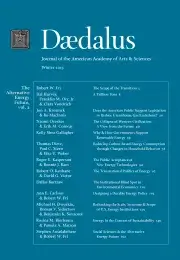The Collapse of Western Civilization: A View from the Future
Authors’ note: Science fiction writers construct an imaginary future; historians attempt to reconstruct the past. Ultimately, both are seeking to understand the present. In this essay, we blend the two genres to imagine a future historian looking back on a past that is our present and (possible) future. The occasion is the tercentenary of the end of Western culture (1540 – 2073); the dilemma being addressed is how we – the children of the Enlightenment – failed to act on robust information about climate change and knowledge of the damaging events that were about to unfold. Our historian concludes that a second Dark Age had fallen on Western civilization, in which denial and self-deception, rooted in an ideological fixation on “free” markets, disabled the world's powerful nations in the face of tragedy. Moreover, the scientists who best understood the problem were hamstrung by their own cultural practices, which demanded an excessively stringent standard for accepting claims of any kind – even those involving imminent threats. Here, our future historian, living in the Second People's Republic of China, recounts the events of the Period of the Penumbra (1988 – 2073) that led to the Great Collapse and Mass Migration (2074).
In the prehistory of “civilization,” many societies rose and fell, but few left as clear and extensive an account of what happened to them and why as the twenty-first-century nation-states that referred to themselves as Western civilization. Even today, two millennia after the collapse of the Roman and Mayan empires and one millennium after the end of the Byzantine and Inca empires, historians, archaeologists, and synthetic-failure paleoanalysts have been unable to agree on the primary causes of those societies’ loss of population, power, stability, and identity. The case of Western civilization is different because the consequences of its actions were not only predictable, but predicted. Moreover, this technologically transitional society left extensive records both in twentieth-century-style paper and in twenty-first-century electronic formats, permitting us to reconstruct what happened in extraordinarily clear detail. While analysts differ on the details, virtually all agree that the people of Western civilization knew what was happening to them but were unable to stop it. Indeed, the most startling aspect of this story is just how much these people knew, yet how little they acted upon what they knew.
. . .
